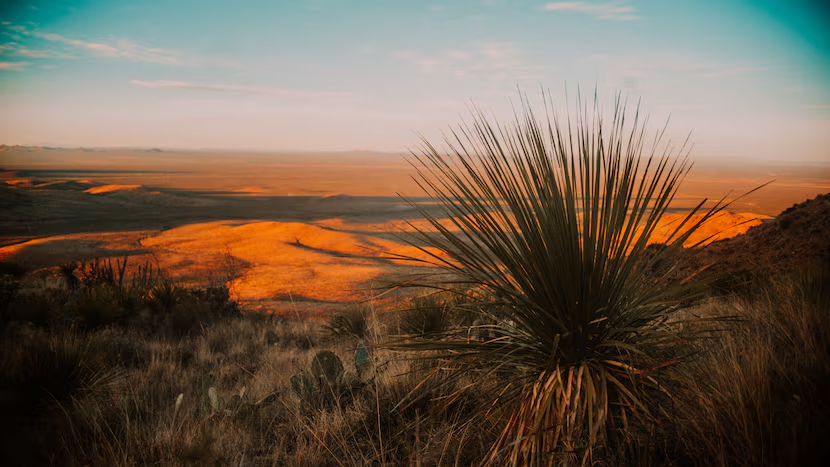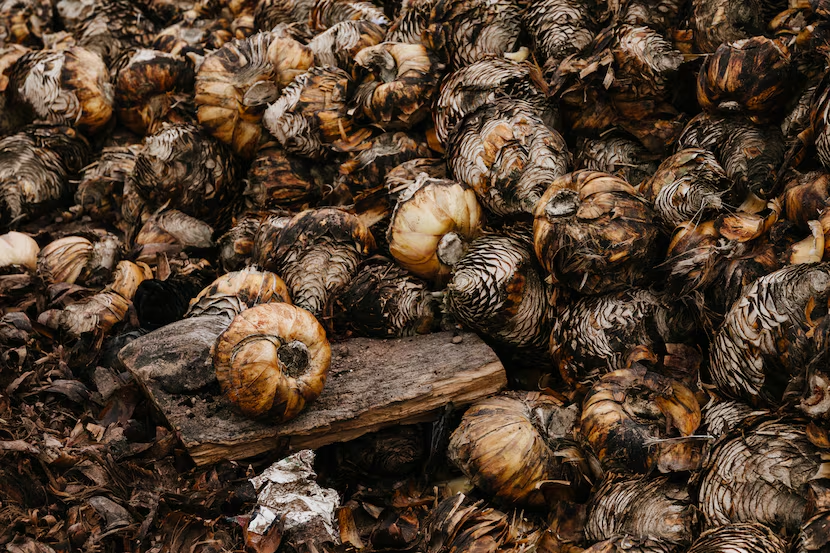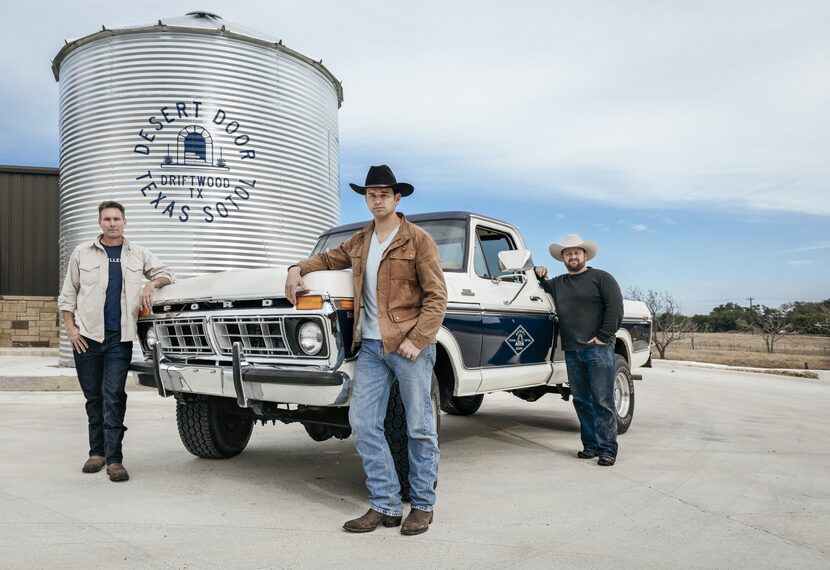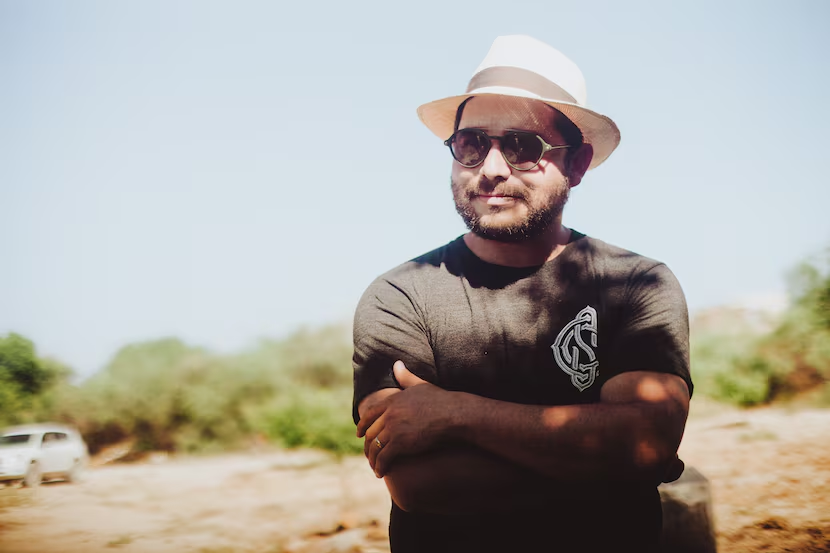Updated at 10:45 a.m.: Revised to reflect President Donald Trump on Wednesday signing the U.S.-Mexico-Canada Agreement.
WASHINGTON – Texas Sen. John Cornyn interrupted the staid and mostly pro forma committee review of President Donald Trump’s revamped trade deal between the U.S., Mexico and Canada with something a bit unusual and complex.
The Republican warned that a minor provision in the sweeping accord could hurt Texas producers of a relatively obscure liquor called sotol.
In raising the mezcal-like spirit – made from a namesake plant that has grown wild for millennia in the Chihuahuan Desert regions of the U.S. and Mexico – Cornyn tapped into a growing transnational debate about culture and tradition on both sides of America’s southern border.
He also offered some advice to the uninitiated.
“For those members of the committee who’ve never consumed sotol, I would recommend it,” Cornyn said at the Senate Finance Committee hearing this month, perhaps anticipating quizzical looks from his colleagues.

That sotol has garnered the attention of Congress at all speaks to a monumental change, one that has seen the liquor emerge as a darling of the in-the-know spirits crowd after decades of being unfairly persecuted as a desert moonshine that only roughnecks would drink.
It’s amid that heady transformation that the U.S., as part of the new trade deal, has agreed to consider classifying sotol as a distinctively Mexican product.
Such a designation would be a coup for Mexican sotoleros, who fear appropriation of a craft they’ve passed through generations. But it could also doom a nascent U.S. industry, including a Driftwood sotol brand, which then would be barred from producing a spirit of that name.
The hubbub, which drew the attention of Cornyn and other Texas lawmakers, may well distill the complexities that can arise when a common culture is divided by an international boundary.
A tradition of sotol production exists on both sides of the U.S.-Mexico line, dating back to long before that line was there. But it has persisted most prominently in Chihuahua and other parts of northern Mexico, where scores of vinatas, or distilleries, have discretely dotted the arid landscape.
Now that the sotol trade could mean big bucks on both sides of the border, there are serious questions about how to respect that heritage in a responsible and sustainable way.
“There is a history that we share,” said Juan Pablo Carvajal, founder of a Mexican sotol brand called Los Magos. “This history has changed because of the people who are in it. It will keep changing because of the people who are in it.”

Tiny part of USMCA
Sotol is but a drop in the broader U.S.-Mexico-Canada Agreement, which Trump signed Wednesday.
The president’s revamp of the 25-year-old North American Free Trade Agreement covers autos, agriculture and all other manners of cross-border commerce, including the hundreds of billions of dollars in trade that Texas alone conducts each year with Mexico and Canada.
But if the accord serves as a modern-day tie between the U.S. and its southern neighbor, then sotol has bonded the region since antiquity.
The plant, which is also called desert spoon in the U.S., is something of a second-cousin to agave. It grows all across the Chihuahuan Desert, an expansive ecosystem that includes big chunks of northern Mexico, southwest Texas, and southern New Mexico and Arizona.
With pointed fronds and an asparagus-like shoot, sotol is likely familiar to anyone who’s ventured out toward Big Bend.
The plant’s bowling ball-sized piña, or heart, is the prized commodity, one that indigenous desert tribes long ago discovered could be fermented into an alcoholic drink. Spanish colonists later introduced European distillation techniques, helping create a process that is still used today.
“It’s very labor intensive,” explained Jacobo Jacquez, 36, a sixth-generation sotolero who produces the spirit for Los Magos and other brands at his family’s operation near Janos, in the northwestern corner of Chihuahua state.
The piñas can be harvested only after 15 years. They are cooked over coals for several days in earthen pits filled with palm leaves and dirt. The hearts, which each produce about one bottle, are then mashed and left to ferment for several more days. Then comes distillation.
The result is a spirit that tastes similar to mezcal but still different, said Emma Janzen, author of “Mezcal: The History, Craft & Cocktails of the World’s Ultimate Artisanal Spirit.”
It can be “super earthy, herbaceous and dusty,” she explained. The liquor, which is typically sipped neat, is even said to take on the taste of the environment in which the plant is grown. Jacquez likened the sensation to what it tastes like “when it rains in the desert.”

Sotol mystique
The spirit is still a relative unknown, with one brand manager estimating that exports of sotol to the U.S. from Mexico might be a “fraction of a percent” of the tequila trade. So the liquor maintains a mystique, even as it has started to gain wider recognition.
That was part of the appeal for three U.S. military veterans who in 2017 opened Desert Door Distillery in Driftwood – currently home to the only commercial sotol operation in the U.S.
One of the co-founders, a sixth-generation Texan named Judson Kauffman, had always remembered his uncle talking “about sotol being moonshined out in West Texas where he grew up,” Brent Looby, another of the co-founders, explained in an email.
“The three of us fell in love with the Texas history, romance and uniqueness of sotol,” added Looby, himself a fifth-generation Texan.
The trio, which includes Ryan Campbell, has created a splash, leaning into the notion that sotol could be to Texas what whiskey is to Tennessee. Selling spirits produced from wild sotol plants harvested on ranches out in West Texas, Desert Door now employs more than 40 people in six U.S. cities.

But their foray didn’t escape notice south of the border.
Since 2004, Mexico has enforced a denomination of origin deeming that sotol, the spirit, could only truly be sotol if it was made in the Mexican states of Chihuahua, Coahuila or Durango. While the classification doesn’t carry legal weight in the U.S., the message was clear.
“It’s not about one country or the other. It’s not about patriotism. It’s just facts,” said Ricardo Pico, a Chihuahua native who founded a brand called Sotol Clande after working for a time at a larger distillery in Mexico. “We have the tradition.”
That tradition came at a cost, too.
The Mexican government, rather than celebrating a living cultural artifact, for decades deemed the sotol craft illegal, pushing producers to society’s fringes. Other forces – including the U.S. mafia during Prohibition, industry experts say – propped up better-known spirits enjoyed by the Mexican elite.
Sotol became stuck with an unwarranted reputation as a poor-quality spirit imbibed by poor people.
Adventurous drinkers, even just a couple decades ago, were left to purchase sotol “out of people’s car trunks and back doors, if you knew who to talk to,” said Gary Paul Nabhan, an ethnobiologist at the University of Arizona’s Southwest Center.

Many sotoleros now see a chance for vindication through broader international acceptance of their Mexican distilling tradition. A nonbinding trade-off tucked into the hundreds of pages of the U.S.-Mexico-Canada Agreement has made that prospect a real possibility.
The U.S. has agreed to consider classifying sotol and two other spirits as distinctively Mexican, as it already does for tequila and mezcal. Mexico, in turn, will consider designating American rye whiskey as distinctively American, as it already does for bourbon and Tennessee whiskey.
Pico, who works with several producers, said the issue comes down to more than just protecting culture. It’s also about delivering economic empowerment, he said.
“It’s about the farmers – you buy a little sotol and you put shoes on the workers’ kids,” he said, explaining that parts of the region do indeed remain impoverished, with many producers unable to obtain the kind of easy access to credit that one might get in the U.S.
Carvajal made a similar point, noting that the further recognition could help allay widespread concern among Mexican sotoleros about “being left behind” if “money that could be invested in Mexico” ends up devoted instead to operations across the border.
It’s unclear if a mere product designation would really have such a transformative effect.
Recognition of these kinds of denominations of origin “have not necessarily been successful in helping small producers, the workers and people in small communities,” said Sarah Bowen, author of “Divided Spirits: Tequila, Mezcal, and the Politics of Production.”
What’s certain is that the classifications – which more often relate to a place name, such as France’s Champagne region – work well as trade protection, she said.
That’s what grabbed the attention of the trio at Desert Door, along with other distillers who are looking to get sotol outfits up and running in the U.S. They could now face the prospect of being legally prohibited from selling a drink called sotol.
“It would really hamper us to not be able to use the plant’s name that’s the key ingredient,” said Morgan Weber, who’s in the process of setting up a sotol distillery in Marfa.
Shared heritage
It’s not that U.S. producers are ignorant of the past, either.
Weber – who’s working on a potential collaboration with Carvajal – said he and other American distillers “need to be responsible and not just jump on the coattails of this deal,” adding that “we don’t want to rip away hundreds of years of culture” built up in Mexico.
But they note that the U.S. has shared in some of that heritage.
Looby pointed to ample evidence of indigenous sotol production in what’s now Texas and to the fact that there was a commercial sotol distillery in El Paso as far back as 1907. He said greater awareness of the overlapping history would actually “benefit the industries in both countries.”
The Americans also have businesses to protect.
So Desert Door’s crew reached out to the Texas congressional delegation to help push back on the potential distinctive product designation. They found a bipartisan group of more than 20 lawmakers, including Cornyn, willing to make the case for sotol’s binational identity.
There wasn’t much that could be done to rejigger the trade deal. But Cornyn got a Trump administration official to go on record saying that the U.S. had only agreed to open a review process and, further, that the U.S. has “no obligation to any particular outcome.”
Texas politicos also secured a language in a congressional report accompanying the trade accord that offered the view that the U.S. Alcohol and Tobacco Tax and Trade Bureau doesn’t even have the authority to recognize sotol as a distinctive product of Mexico.
Those moves may ease anxiety in the U.S. They’ve created a fresh stir in Mexico.
“I feel that they want to take the name from us,” said Jacquez, the sixth-generation sotolero. “Agree to disagree, but there should be some kind of respect.”
Even still, there remains some optimism about reaching a resolution that could satisfy most all parties. It could be as simple as delineating Mexican sotol vs. Texas sotol, much like the South American spirit pisco carries designations in both Peru and Chile.
Whatever happens, Carvajal said, “there’s a fine line that needs to be threaded here.”
“There is an understanding that this plant, that is native to the Chihuahuan Desert … allows people to step into this tradition, make it their own and make it new,” he said. “It’s about recognizing the tradition that exists and also inviting new traditions to be made.”


